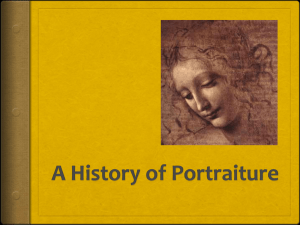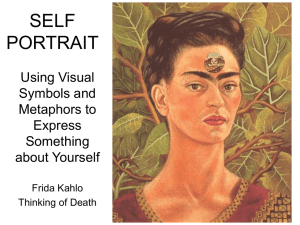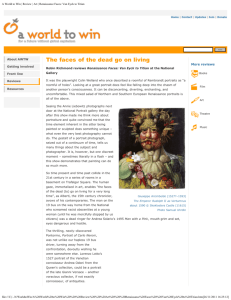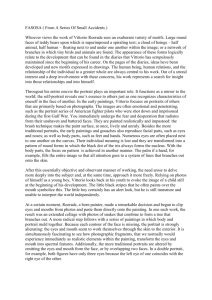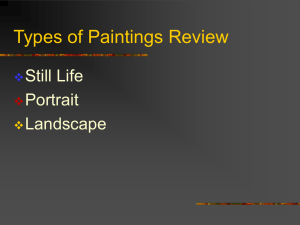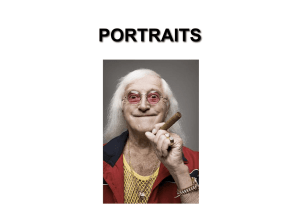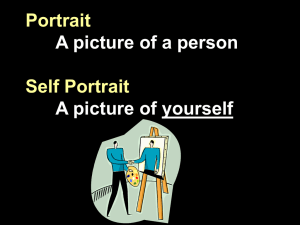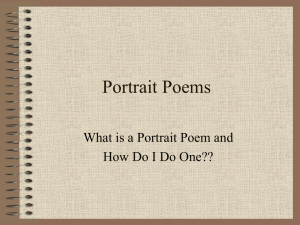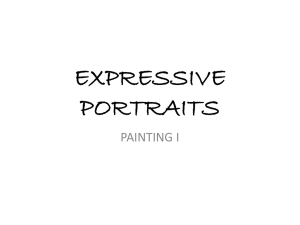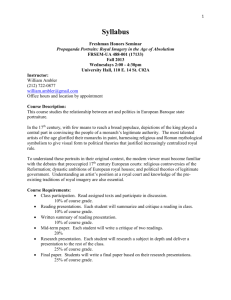click here to
advertisement
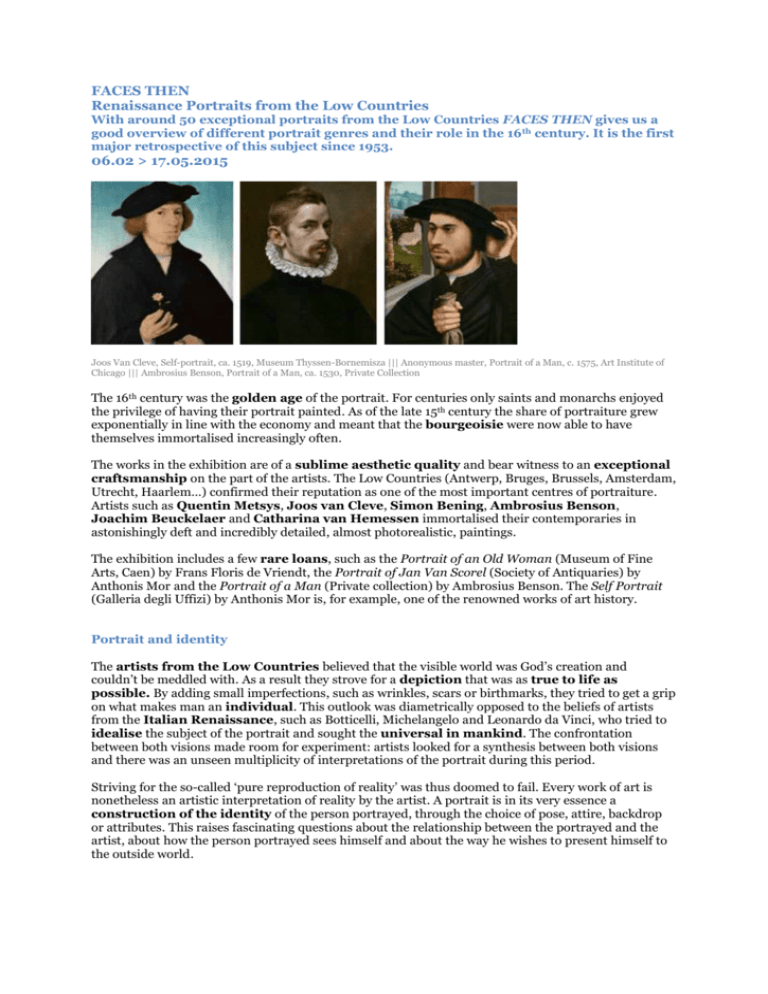
FACES THEN Renaissance Portraits from the Low Countries With around 50 exceptional portraits from the Low Countries FACES THEN gives us a good overview of different portrait genres and their role in the 16 th century. It is the first major retrospective of this subject since 1953. 06.02 > 17.05.2015 Joos Van Cleve, Self-portrait, ca. 1519, Museum Thyssen-Bornemisza ||| Anonymous master, Portrait of a Man, c. 1575, Art Institute of Chicago ||| Ambrosius Benson, Portrait of a Man, ca. 1530, Private Collection The 16th century was the golden age of the portrait. For centuries only saints and monarchs enjoyed the privilege of having their portrait painted. As of the late 15th century the share of portraiture grew exponentially in line with the economy and meant that the bourgeoisie were now able to have themselves immortalised increasingly often. The works in the exhibition are of a sublime aesthetic quality and bear witness to an exceptional craftsmanship on the part of the artists. The Low Countries (Antwerp, Bruges, Brussels, Amsterdam, Utrecht, Haarlem…) confirmed their reputation as one of the most important centres of portraiture. Artists such as Quentin Metsys, Joos van Cleve, Simon Bening, Ambrosius Benson, Joachim Beuckelaer and Catharina van Hemessen immortalised their contemporaries in astonishingly deft and incredibly detailed, almost photorealistic, paintings. The exhibition includes a few rare loans, such as the Portrait of an Old Woman (Museum of Fine Arts, Caen) by Frans Floris de Vriendt, the Portrait of Jan Van Scorel (Society of Antiquaries) by Anthonis Mor and the Portrait of a Man (Private collection) by Ambrosius Benson. The Self Portrait (Galleria degli Uffizi) by Anthonis Mor is, for example, one of the renowned works of art history. Portrait and identity The artists from the Low Countries believed that the visible world was God’s creation and couldn’t be meddled with. As a result they strove for a depiction that was as true to life as possible. By adding small imperfections, such as wrinkles, scars or birthmarks, they tried to get a grip on what makes man an individual. This outlook was diametrically opposed to the beliefs of artists from the Italian Renaissance, such as Botticelli, Michelangelo and Leonardo da Vinci, who tried to idealise the subject of the portrait and sought the universal in mankind. The confrontation between both visions made room for experiment: artists looked for a synthesis between both visions and there was an unseen multiplicity of interpretations of the portrait during this period. Striving for the so-called ‘pure reproduction of reality’ was thus doomed to fail. Every work of art is nonetheless an artistic interpretation of reality by the artist. A portrait is in its very essence a construction of the identity of the person portrayed, through the choice of pose, attire, backdrop or attributes. This raises fascinating questions about the relationship between the portrayed and the artist, about how the person portrayed sees himself and about the way he wishes to present himself to the outside world. Curators Art historian Till-Holger Borchert, born in Germany and specialised in 14th and 15th century art, has been head curator of the Groeninge Museum and the Arentshuis in Bruges since 2003 and writes authoritatively about the art of the Netherlands. Memling’s Portraits (Bruges / New York, Frick Collection / Madrid, Thyssen-Bornemisza) is one of the most important exhibitions that he has curated. His book Meesterwerk was praised by the Financial Times as one of the best art books of 2014. Koenraad Jonckheere lectures in Northern Baroque Art at the University of Ghent and published about the art market of the 17th and 18th century and about portraiture in 16th century Antwerp. He was curator of the exhibition about Michiel Coxcie in Museum M in Leuven. BOZAR EXPO spring 2015: Focus on ‘the other’ In the spring of 2015 BOZAR EXPO will focus on ‘the other’. The spring programme bridges the gap between Renaissance portraits and contemporary portrait photography, between Europe and the Ottoman Empire. The diptych FACES THEN. Renaissance Portraits from the Low Countries and FACES NOW. European Portrait Photography since 1990 offers a balanced view of the Western painting tradition of portraiture. The portrait has a different status to a landscape or a still life: if you look at a portrait, you are looking at “the other”. To complement this BOZAR is putting on the exhibition The Sultan’s World. The Ottoman Orient in Renaissance Art. Highlights include the portraits of the Eastern rulers and Western merchants by Venetian masters such as Tintoretto, Bellini, Titian and Veronese’s workshop. The focus on “the other” is thus extended to encompass another culture. The three exhibitions together form fascinating links between time and space. They tell a multifaceted tale of the construction of identities and influences on perception, a debate that is extremely relevant in this age of social media, selfies and rising globalisation. With these three exhibitions the Centre for Fine Arts is providing its public with the opportunity to gain a broader understanding of portraiture and the concept of representation from different perspectives. What image does an artist decide to exhibit of himself, of others or of other cultures? To what extent does this construction influence the perception of reality? The entire programme is part of the Centre for Fine Art’s mission to come up with exhibitions which focus on centuries of artistic cross-pollination and the history and identity of Europe. Curators: Till-Holger Borchert, Koenraad Jonckheere Support: Ministerie van Buitenlandse Zaken | Ministère des Affaires étrangères With works by: Simon Bening , Ambrosius Benson, Quentin Metsys, Bernard van Orley, Michel Sittow, Joos van Cleve, Floris van de Vriendt, Master of the Magdalena Legend, Marteen van Heemskerck,Anthonis Mor, Joachim Beuckelaer, Willem Key, Adriaen Thomasz. Key, Frans I Pourbus, Pieter Pourbus, Catharina van Hemessen VISITOR INFORMATION FACES THEN. Renaissance Portraits from the Low Countries From the 6th of February until the 17th of May 2015 BOZAR – Centre for Fine Arts, Rue Ravensteinstraat 23, 1000 Brussels Open: Tuesdays to Sundays: 10 am> 6 pm (Thursdays: 10 am > 9 pm) Closed: Mondays TICKETS Ticket: € 10/8 (BOZARfriends) Combitickets: FACES NOW/FACES THEN: € 14/12 The Sultan’s World + FACES NOW/FACES THEN: € 21/19 VISITOR INFORMATION Visitor guide: € 1 Catalogue: € 49,50 (256p. NL/FR, BOZAR BOOKS & Hannibal), Hardcover, 31 x 24 cm GUIDED TOURS This Spring, BOZAR not only organizes guided visits per exhibition, but also offers tours with the highlights of the different exhibitions. Guide: € 75/ 95 (weekends) BOZAR INFO& TICKETS www.bozar.be – info@bozar.be – 0032 2 507 82 00 PRESS CONTACT leen.daems@bozar.be - T +32 2 507 83 89 – M. +32 479 98 66 07 PRESS IMAGES www.bozar.be - Password: press

